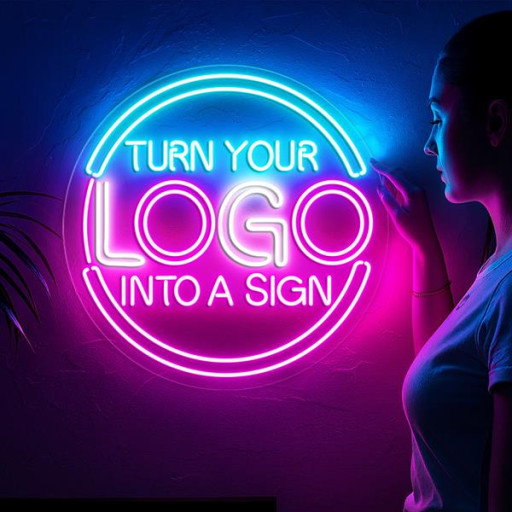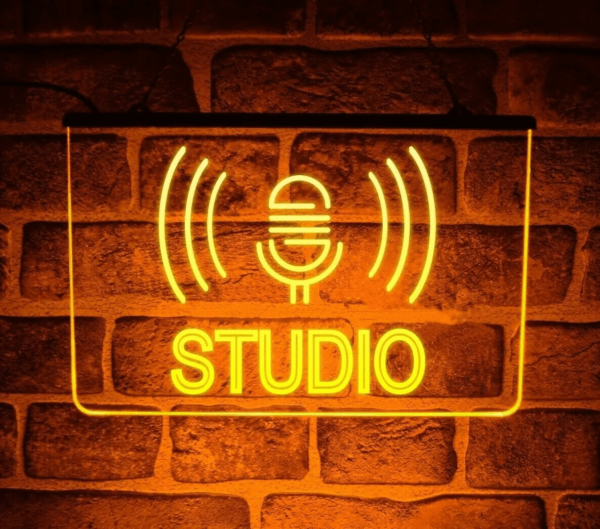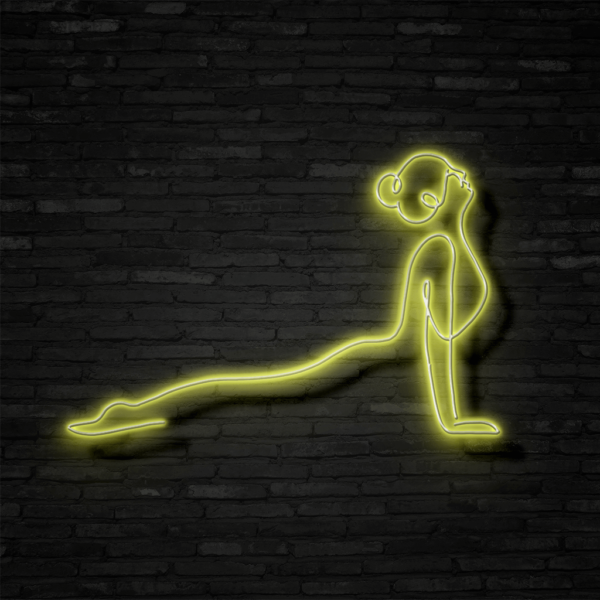
Do neon signs use a lot of electricity?
LED neon lights are commonly employed for decorative or advertising purposes due to their vibrant and attention-grabbing nature. However, a common query arises regarding “Do neon signs use a lot of electricity?”. The answer to this question is contingent upon various factors. Join us as we explore and unravel the specifics with Orant Neon in this article!
Do neon signs use a lot of electricity?
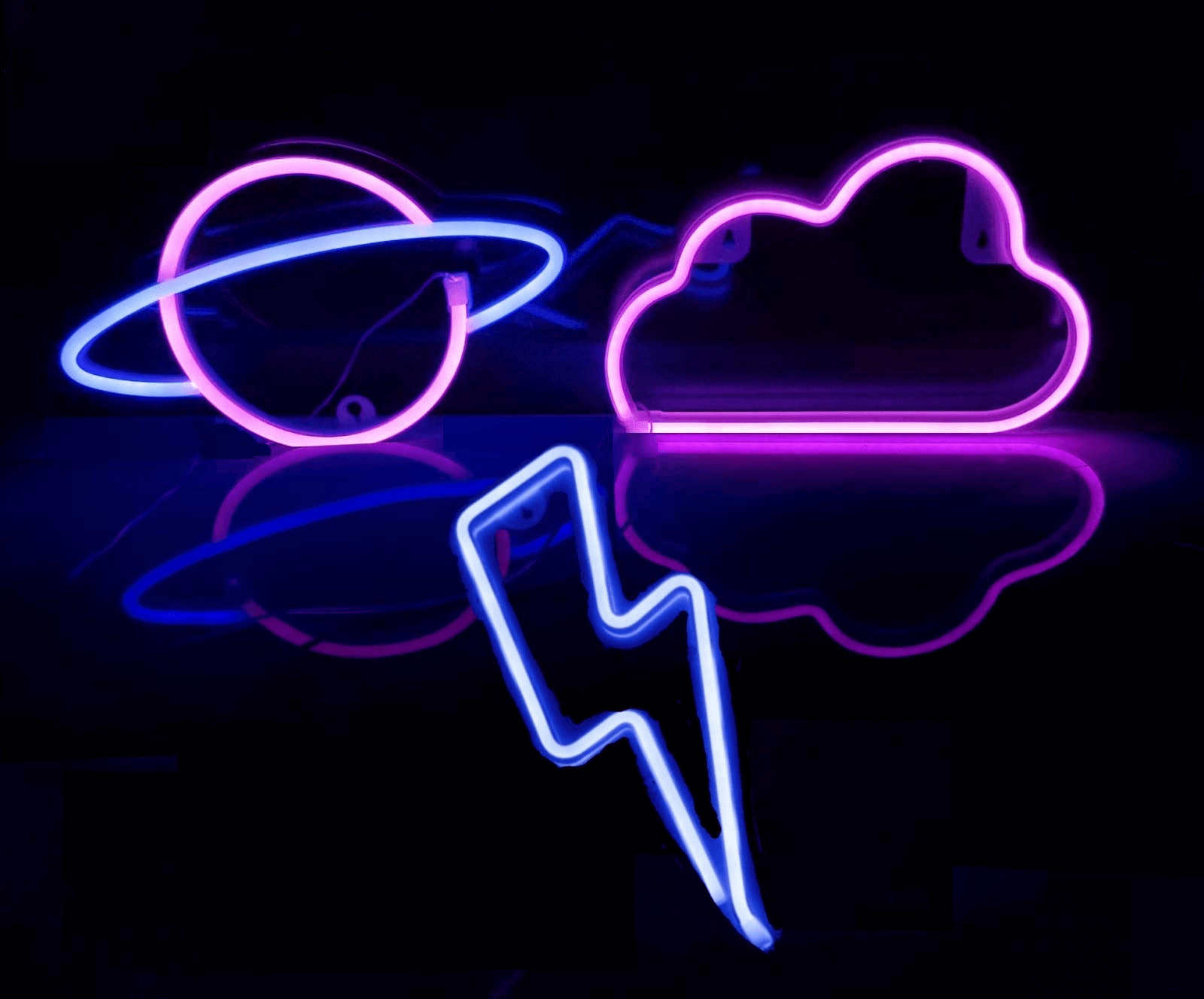
To answer the question “Do neon signs use a lot of electricity?”, you can learn about the properties of each type of sign today, LED neon and Glass neon:
Power consumption of LED neon
LED neon advertising is notably energy-efficient, with the majority of electrical energy directly contributing to light generation. This results in lower heat generation compared to traditional light bulbs.
LED neon flex operates at 12 or 24 volts and boasts a lifespan exceeding 50,000 hours. Typically, only one transformer (power supply unit) is required for LED-based products.
Calculating the power consumption of an LED neon sign is straightforward and doesn't demand advanced mathematical or engineering knowledge. You only need three parameters: power in watts (W), total LED tube length in meters (m), and operating time in hours (h).
To begin, calculating the energy consumption per hour is sensible for subsequent extrapolation. LED neon averages about 9 watts per meter (W/m). For instance, a logo or lettering with a total tube length of 5 meters consumes 45 watts per hour: 9W/m x 5m x 1h = 45 W/h or 0.045 kWh (kilowatt-hours).
For extrapolating power consumption over a month or year, the daily operating hours of the LED neon sign are crucial. Assuming the hypothetical illuminated logo runs for eight hours per day:
45 Wh x 8h = 360 watts per day (or 0.36 kW)
0.36 kW x 30 days = 10.8 kW per month
10.8 kW x 12 months = 129.6 kW per year
Power consumption of Glass neon
Determining the energy consumption of "classic" neon tubes, characterized by bent glass tubes, is regrettably more complex than calculating LED neon. The power usage hinges on various factors, including the total length of the glass tubes, color, tube diameter (ranging from 8 to 18 mm), the specific transformer model's power, the number of transformers needed, and the number of systems (individual glass elements comprising the neon). Consequently, providing a straightforward answer to the question of how much power neon tubes consume proves challenging due to these multiple variables.
>>>See more: How do LED Neon Signs Work, Plug-In Requirements, Durability, and Lighting MechanismWhat factors affect the power usage of neon signs?
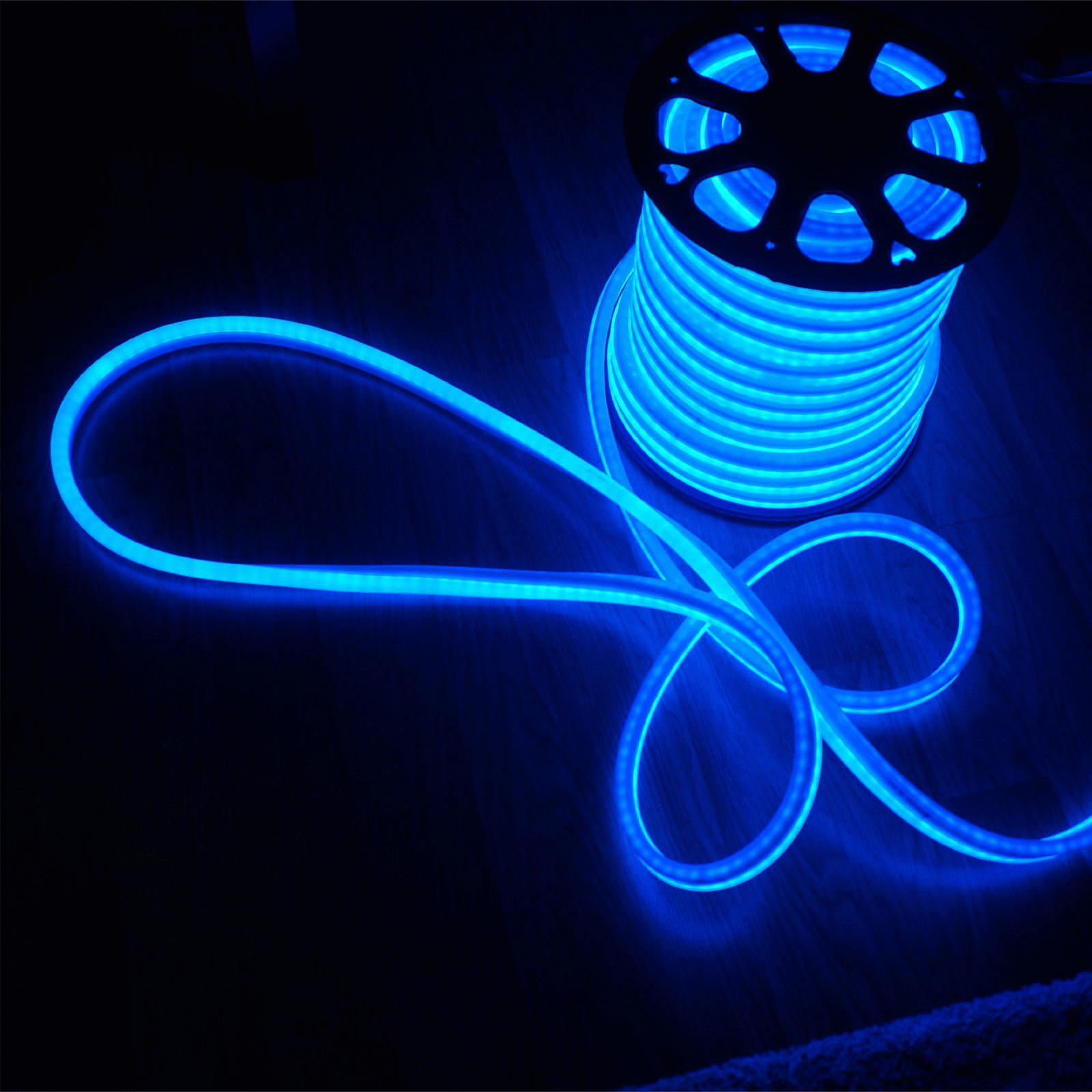
Do neon signs use a lot of electricity? Neon signs typically do not consume more electricity than standard lightbulbs, but the extent of your energy usage depends on the size of the light and how frequently it is in use. The color of the neon gas used also plays a role, with red neon lighting averaging a power consumption of 3.5 to 4 watts per foot.
Consideration of the neon light's output is crucial. Larger signs with multiple letters and intense illumination may use more energy. Conversely, smaller neon lights, like our Head in the Clouds neon sign, tend to have lower energy consumption than larger options with multiple letters. The choice of font for your neon sign can also impact energy usage, as certain fonts may require more glass tubing and power.
Energy-efficiency and neon lighting
In terms of energy efficiency, neon signs outperform fluorescent lighting, with fluorescent fixtures potentially using up to 50% more energy than a standard neon glass tube. Many business owners opt for neon signs due to their ability to provide bold illumination day and night, allowing for 24/7 operation. Some customers prefer LED neon signs for their increased energy efficiency, and LED neon flex signage offers a balance of energy efficiency and striking lighting design. LED neon signs are available in a wide range of colors and can be rented for special occasions such as weddings and birthday parties.
Choosing a neon sign
When choosing a neon sign, it's an ideal way to infuse personality into a space with vibrant colors and unique designs. As our neon signs are handmade to order, you have a diverse array of color options, including purple, pink, cool white, yellow, dark blue, red, green, and more. Custom-made neon signs are also available in various sizes, providing flexibility to control energy costs by opting for a smaller font or operating the sign only during business hours if more convenient.
Calculating the electricity consumption of a neon sign
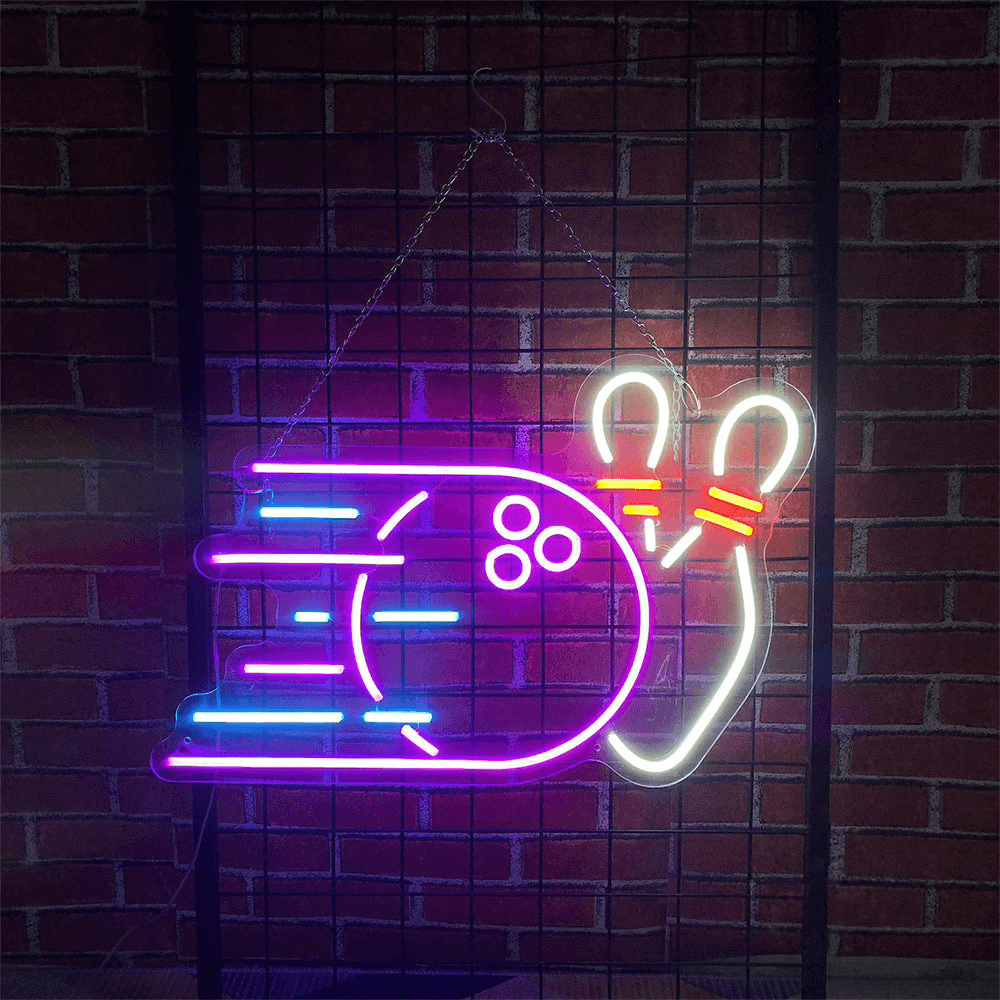
Do neon signs use a lot of electricity? Managing energy consumption is crucial, especially for businesses. Investing in a sizable neon sign can become impractical if the operational costs are exorbitant. Custom-made neon signs, depending on design, size, and specifications, can incur significant expenses, with larger neon signs translating to higher nightly operational costs.
To assess the energy consumption of a neon sign, start by determining the wattage used per foot of the neon tube. This calculation is influenced by the transformer type used and the neon tube color, which is produced using specific neon gas.
Follow this straightforward equation:
- Calculate the transformer wattage of your neon sign and convert it to kilowatts (A).
- Multiply A by the number of hours the neon light will be on to get B.
- Multiply B by 365 days to obtain C.
- Multiply C by the average electricity cost per kWh to find D.
The equation is expressed as:
- A kilowatts x (number of hours the light will be on) =B
- B x 365 days = C
- C x (average electricity cost per kWh) = D
- D = Neon light energy consumption
So, for example, if you want to calculate the energy consumption of a red neon sign with a transformer wattage of 95 watts, operational for 10 hours a night, and an energy cost of 16.3 kWh:
- 95 watts = 0.095 kilowatts
- 0.095 kilowatts x 10 hours a day = 0.95 kWh
- 0.95 kWh x 365 = 346.75
- 346.75 x 14 cent kWh = 4854.5 cents OR $48.545
Ideally, running your neon sign throughout the night (around 12 hours) is optimal. However, for enhanced energy efficiency and to extend the neon sign's lifespan, leaving it on continuously, day and night, is recommended.
Should you choose LED neon instead of glass neon signs?

In short, the question "Do neon signs use a lot of electricity?", neon sign signs contribute to over 75% energy savings, making them environmentally and financially sound.
LEDs are recognized for their durability, being both robust and highly flexible. Their strength eliminates concerns about handling, and unlike glass neon, they are not prone to breakage. This characteristic significantly reduces the risk of damage, especially in environments with children or less careful handlers.
Furthermore, their impressive lifespan of 25 times longer than traditional options translates to substantial savings on replacement costs. Considering these benefits, it may be opportune to transition away from incandescent bulbs.
Conclusion
In summary, “Do neon signs use a lot of electricity?”, the electricity consumption of neon signs falls within a moderate range, utilizing a fair amount compared to certain lighting alternatives. Xneonshop trusts that the provided information has enhanced your understanding of LED signs. For further articles, explore our website today. For more detailed information and additional support, please contact us through:
- Website: https://xneonled.com
- Email: support@xneonled.com
 Free Express Shipping
Free Express Shipping
 49% Off
49% Off
 12-Months Warranty
12-Months Warranty





